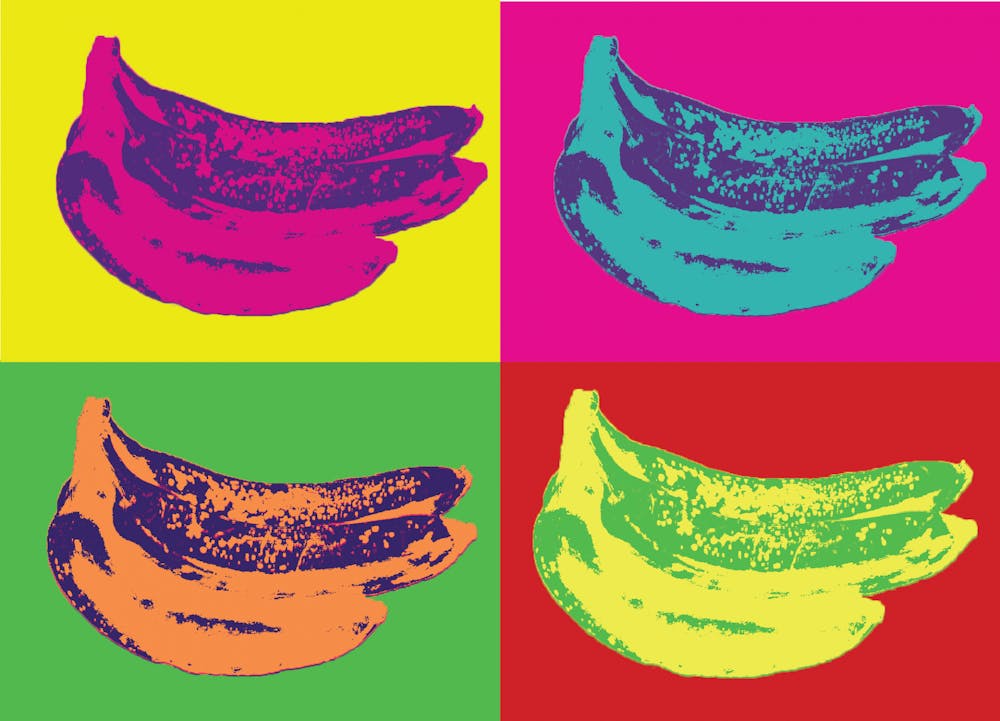It is a universally acknowledged truth that an artist in possession of great talent must be in want of an ideal subject.
So, in 1962, Andy Warhol chose a seemingly mundane can of soup.
“I used to drink it [Campbell’s Soup]. I used to have the same lunch every day, for twenty years, I guess, the same thing over and over again.”
That day, Warhol purchased a number of soup cans and began the meticulous process of tracing projections onto the canvas. He ensured that he painted tightly within the outlines to mimic the appearance of the offset lithographic labels. The finished work: a series of tightly–packed soup cans (32 varieties altogether) rendered in cartoon, stacked closely together with the bizarre appearance that they were floating in space.
It was a humble soup can that formed the basis of Warhol’s magnum opus.
The pop art movement gained traction in the United States in the mid–1950s, drawing from the post–war consumer boom that was marked by an uncanny sense of optimism and an unflinching faith in the American Dream. Often considered a reaction to the then dominant abstract expressionism, Pop art moved away from highbrow themes such as morality, mythology, and classic history in favor of depicting kitsch and irony. The movement celebrated the banalities of everyday life, drawing inspiration from commonplace objects and solidifying the introduction of irony into elite art.
Warhol’s first exhibit of the Campbell Soup Cans took place at the Ferus Gallery in Los Angeles, and elicited an indifferent reaction from the public. However, it sparked a debate within the art world. The notion that a mere reproduction of a mass consumer good could be construed as elite art was met with a fair share of criticism—for example, an art dealer in a nearby gallery sold actual cans of soup as a means of mockery. Warhol’s soup cans are redundant and painstakingly ordinary. It’s these elements that allowed them to challenge the sanctity of art, as well as the values the abstract expressionist movement clung to.
More significantly, the work highlighted a paradoxical beauty in the uninspired reality of mass production. The very fact that a surplus of food and other consumer goods existed and could be documented in such a repetitive manner was a testament to the lush lifestyle of the post–war era. After a period of particularly difficult years, rife with starvation and shortages, this epoch should celebrate the excess. Opulence used to be synonymous with the aristocracy, but here, it’s redefined by a simple can of soup.
The year after, artist Roy Lichtenstein took his own fascination with food to the canvas. He painted a blazing red hot dog, sandwiched within an incandescent yellow bun and topped with an eerily flawless line of mustard against the backdrop of Ben–Day dots that were characteristic of his comic–inspired style. Aptly titled, Hot Dog with Mustard, Lichtenstein’s artwork presented a quintessentially American food in all its simplicity. The hot dog, as it stands, is not aristocratic or unfamiliar—it’s comfort food. Liechtenstein translated this theme into the simplicity of his painting through a simple color scheme and clean, sleek lines. Though it would be a stretch to attach patriotism to this work as well, there's something innately American about a hot dog that lends itself to the artwork. Lichtenstein highlights the elegance of American consumption by portraying the food that perhaps best exemplifies it.
While revolutionary in their own right, Warhol, Lichtenstein, and most other pop artists confined their fixation with food to two dimensional mediums.
On the other hand, Claes Oldenburg insisted on (quite literally) inflating this concept, creating giant soft sculptures of soggy hamburgers, slices of cake and sandwiches. His work draws on elements of surrealism in a playful way, with gargantuan sculptures that diminish the size of the spectator looking at it. Oldenburg’s manipulation of perspective is a tongue–in–cheek comment on the vastness of American consumerism. Mass production is Goliath, and we, the viewers, are David.
His work by no means emanates perfectionism. One viewer at his exhibit described The Burger as a “sloppy work of art,” but perhaps that’s the point. Oldenburg considered himself a realist (even though he incorporated surreal elements), and wanted to capture the banalities of everyday life. His representation of the burger is, in fact, probably a more accurate encapsulation of a McDonald's burger than their own advertisements.
Pop artists drew upon food to both glamorize and criticize aspects of American society in their time period in varying ways. But amid these different techniques, artistic intention, and styles, one core provision remains: the sheer ubiquity and magnitude of food in everyday society. Pop art is inexplicably comforting to look at, partly because it capitalizes on the familiar: what we know. It remains one of the least complex art forms because it resonates with so many.
The same can be said of food, especially the kinds most associated with the U.S—the ones bursting at the seams with artificial chemicals and deep fried in oil, stuffed into cans and packaged in brightly colored packaging. This food, in particular, is dismissed by many for a variety of reasons, of which many are valid, such as health and environmental concerns. Still, pop art shows that there is a certain reverence for these goods and the special place they hold in our stomachs, our hearts, and our history.

